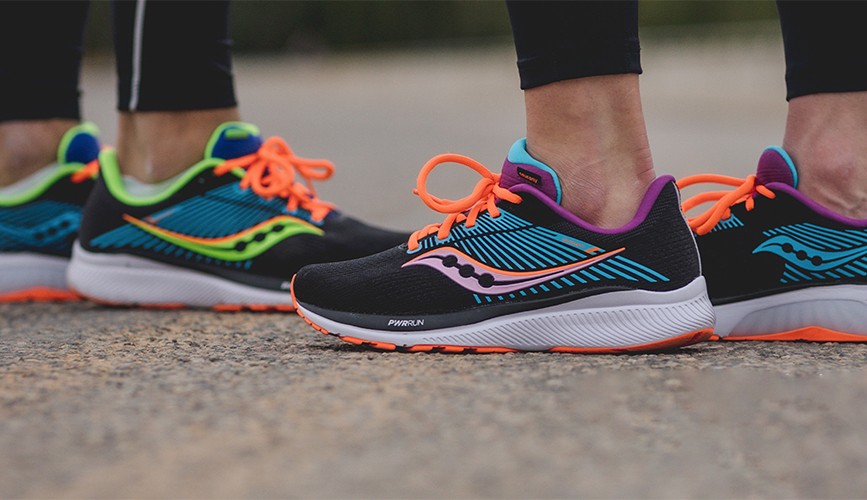S&P Global Ratings revised the debt rating outlook on Wolverine World Wide Inc. to stable from negative as the company has outperformed S&P’s expectations during the ongoing pandemic and paid off its $171 million 364-day term loan.
S&P affirmed its ‘BB’ issuer credit rating on the company. At the same time, the rating agency raised its issue-level rating on the company’s senior secured credit facility to ‘BBB-‘ from ‘BB+’ and revised the recovery rating to ‘1’ from ‘2’ because of its lower level of debt. The ‘1’ recovery rating indicates its expectation for very high (90 percent-100 percent, rounded estimate: 95 percent) recovery in the event of a payment default. Finally, S&P affirmed the ‘BB-‘ issue-level rating on the company’s unsecured notes. The recovery rating is unchanged at ‘5’.
S&P wrote in its analysis, “Wolverine World Wide’s profitability and operating cash flow generation outperformed our expectations, and we now expect leverage to be maintained about 3x. We expect the company to return to growth in 2021 as the casualization trend continues to drive healthy consumer demand for its brands. In addition, its revenue and EBITDA margins should improve because we expect stores to remain open in the U.S. in 2021 compared with the unprecedented store closures of 2020. As such, we now expect its adjusted leverage will be maintained in the 3x area compared with our expectation of over 4x at the onset of the pandemic.
“The company’s 2020 performance was significantly affected by the retail shutdowns because of the pandemic, with revenue down approximately 20 percent from 2019; however, its gross margin and cash flow generation exceeded our expectations. Wolverine World Wide took early actions in cutting out a significant portion of inventory purchases during the beginning of the pandemic to preserve cash. The company’s portfolio of outdoor and athletic brands, anchored by Merrell and Saucony, saw strong consumer demand (approaching 50 percent of overall sales) during the year as stay-at-home mandates shifted consumer preferences. Its work shoe brands also performed well as front-line and construction workers were less affected by the pivotal shift to working from home. As a result of healthy consumer demand constrained by very lean inventory positions, the company was able to command much healthier gross margins. It expanded gross margin by 50 basis points in 2020 from 2019 levels and generated approximately $310 million of cash from operations with a meaningful portion coming from working capital benefits.
“Growth in the digital channel will continue to offset difficulties in the brick and mortar segment for 2021. The company’s digital channel revenue has grown by over 50 percent over the past year, and we believe this trend will continue to be strong in 2021. S&P Global Ratings forecasts that vaccines will be widely disseminated by late summer 2021, and consumer behaviors will begin to normalize somewhat by the end of the year. Even after the pandemic, we believe a good portion of shopping for footwear has permanently shifted online because of the increased infrastructure to support this channel and the convenience it brings to consumers. This reflects our estimate that WWW’s overall digital sales, including its own and wholesale partners’ digital channels, would be approximately 50 percent of its total sales, compared with the approximately 20 percent generated online pre-pandemic.
“Free cash flow generation will be weaker in 2021 and 2022 as the company reinvests in inventory and growth initiatives. We project the company’s free cash flow generation will be positive but notably less than 2020 levels of $310 million. This is primarily driven by very lean inventory positions in 2020 that we do not believe are sustainable. We forecast the company will invest a material portion of its cash flow to bring inventory back to normal operating levels in 2021. In addition, we expect the company to accelerate investments in its owned digital channel, including digital infrastructure and digital marketing platforms, to capture market share.
“Capital allocation and financial policies will be less aggressive in 2021 given weak macro-economic conditions. We expect the company to continue to focus on operating priorities and returning to normal operating levels before returning to higher shareholder returns. Although the company had a history of aggressive share repurchases, we expect it will remain conservative for 2021, before returning to its normal shareholder return cadences in 2022. The company continued to pay its dividend during the pandemic, and we expect that to continue. We do not expect the company to make large debt-funded acquisitions at this time as it focuses on optimizing its current portfolio of brands.
“Wolverine World Wide is exposed to modest environmental and regulatory risk in its operations. In 2019 the Company reached an agreement with the State of Michigan, Plainfield Charter Township, and Algoma Township and 3M company recording net costs of $58 million over the use of 3M’s Scotchgard at its former U.S. leather tannery, which is alleged to have affected nearby groundwater. We do not assume further material expenses since the tannery is closed and the company was able to absorb the settlement with sufficient liquidity and no material damages to its brands or operations. However, environmental concerns in the footwear and apparel Industry are also often long-term, as evidenced by the remediation efforts around the tannery activities that occurred from the late 1950s to 2002.
“The stable outlook reflects our expectation that the demand for the company’s products will remain healthy because of its casual product lines and that the company will continue to grow in its digital channels, leading to leverage improving to the low-3x area, despite our expectation for 2021 to continue to be a disrupted and difficult year for the industry.”
Photo courtesy WWW/Saucony














